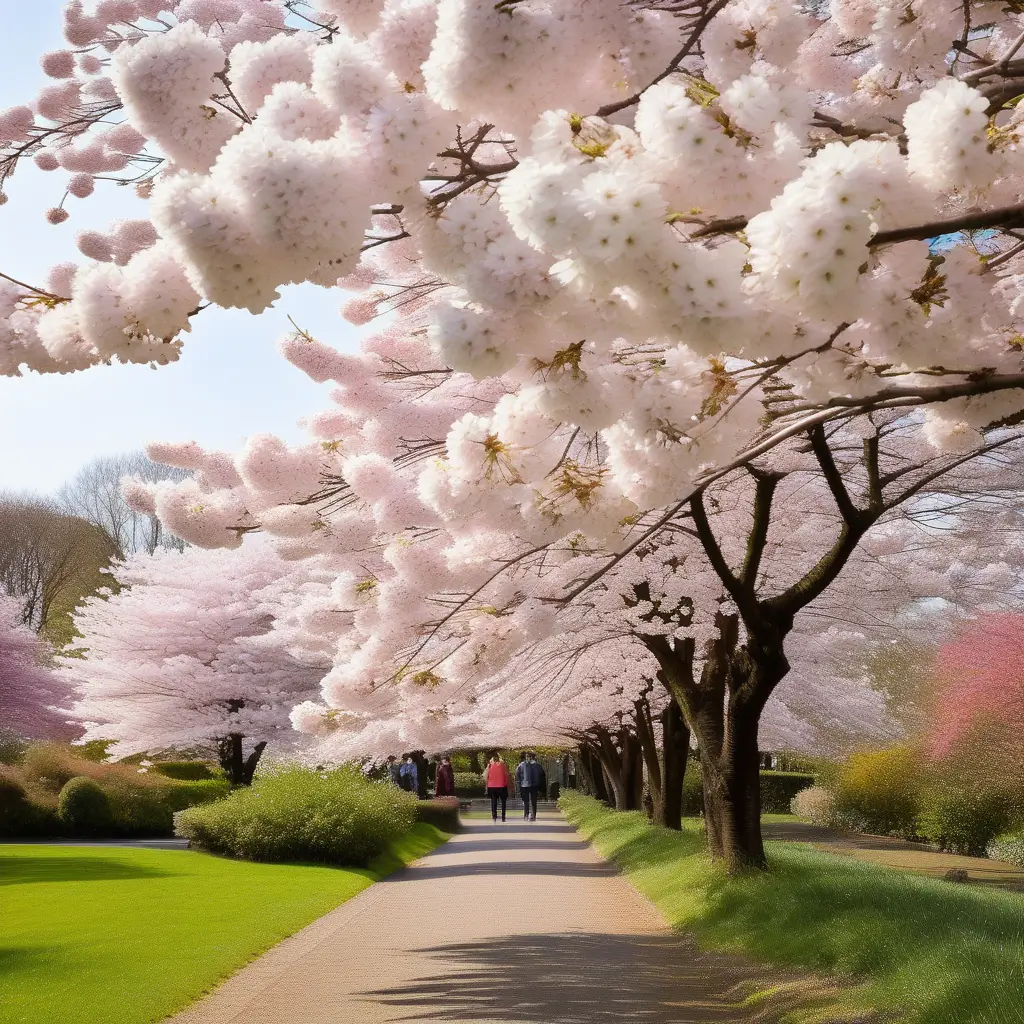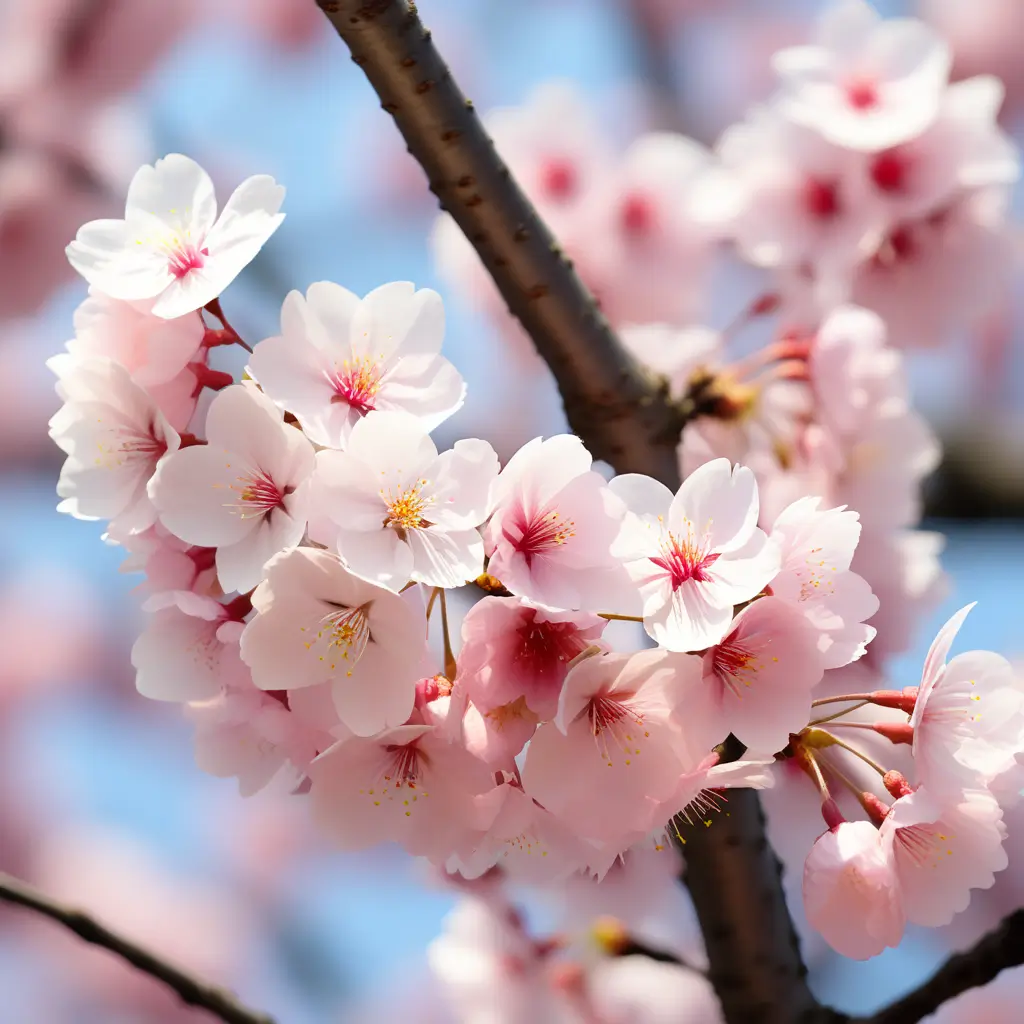Cherry blossoms are iconic spring flowers, best known for bursting into pink fluffy blooms that create dazzling landscape displays. But some people wonder – can cherry blossoms be white instead of the familiar pink shades?
The answer is yes. While most wild and cultivated cherry trees produce pink or reddish flowers due to certain pigments, there are a few natural and cultivated varieties that have delicate white blooms. Read on to learn more about these elusive white cherry blossom trees.
White-Flowering Varieties of Cherry Trees
Most ornamental cherry trees that are simply called “cherry blossom trees” belong to the species Prunus serrulata or Prunus x yedoensis. These iconic spring-flowering cherries have shades of light pink to vivid reddish-pink blossoms.
However, there are a few different varieties and cultivars that naturally grow white flowers instead:
Higan Cherry (Prunus subhirtella)
This species is sometimes called “spring cherry” since it blooms very early – sometimes in the Fall or even in Winter if temperatures rise high enough. The flowers appear along the bare branches, providing a striking look.
There are a few different cultivars of Prunus subhirtella that have white blooms:
- Prunus subhirtella var. candidissima – Flowers open pale pink but fade to an almost pure snow white.
- Prunus subhirtella ‘Autumnalis White’ – Opens white and stays white, on earlier side of Spring bloom window.
Yoshino Cherry Cultivars
There are also some white-flowering cultivated varieties within the very popular Prunus x yedoensis or Yoshino flowering cherry species:
- Prunus x yedoensis ‘Akebono’ – Large, pure white petals that fade to light pink before falling. Abundant early spring blooms.
- Prunus x yedoensis ‘White Cloud’ – White semi-double blossoms that emerge earlier than most flowering cherries. Dark green foliage.
As you can see, there are a few options for white cherry blossoms among the dozens of Prunus genus species and their cultivars. The flowers may start white and fade to light pink or remain a stunning snow white throughout their week-or-so bloom time.
What Makes Cherry Blossoms White vs. Pink?
You may be wondering why most cherry blossom trees have shades of light to vivid pink, while only some cultivars and species grow white flowers instead.
It comes down to the plant pigments. Most cherry blossom trees, especially the iconic Prunus serrulata varieties, contain certain flavonoids and anthocyanins. These pigment compounds are also found in foods like berries or grapes, and they create red, purple, and pink hues.
The concentration and types of anthocyanins, as well as pH levels and other factors, produce the variations in color intensity among cherry blossom trees – ranging from almost white to bright purplish-pink.
The white flowering varieties of ornamental cherry simply lack those pink-hued pigments in their petals. Without anthocyanins building up in the cells as the flowers develop, they remain a clean bright white instead of turning pink.
Some trees may start with pale pink petals that quickly fade to white without the continued anthocyanin production. Environmental factors could also impact coloration – for example, a cold Spring could inhibit pigment production in borderline pink varieties. But genetics play the most pivotal role.
Other White-Flowering Fruit Trees
Cherry blossom trees are not the only flowering fruit trees that sometimes grow white spring blooms. Varieties of the following can also have gorgeous white floral displays:
- Plums – Prunus domestica and other plum species have numerous white-flowering varieties like ‘Belle de Louvain’, ‘Hollywood’, and ‘Burbank Elephant Heart’.
- Apples – Many crabapples like Malus spectabilis ‘Plena’ and cultivars of Malus pumila have white blossoms, like ‘Glory of Aalsmeer’.
- Pears – European, Asian, and hybrid pear tree varieties can have white spring flowers. Examples include ‘Bradford’ Callery pear and ‘Moonglow’ pear.
So if you love the look of flowering fruit trees but want white spring blooms instead of pink, you certainly have options to choose from. Apples, plums, pears, and cherries all include some cultivars boasting clean white floral displays.
Growing White Flowering Cherry Trees
If you decide to grow an ornamental white cherry blossom tree, you’ll find its needs quite similar to the classic pink varieties:
- Sunlight – Flowering cherries need full sun for at least 6 hours per day, preferably closer to 8 hours. This encourages the heaviest bloom displays.
- Soil – Well-draining soil is crucial. Add compost if native dirt is too rocky or dense. Cherry trees dislike soggy soil.
- Water – Give supplemental irrigation during dry spells, especially while young trees establish roots. Then they only need occasional watering during fruit production or drought conditions.
- Pruning – For ornamental varieties, prune right after flowering while the tree recovers vigor. Remove crossing/damaged branches, shape form.
- Pests/Diseases – Unfortunately cherry trees are prone to issues like bacterial canker, leaf spot, borers, and tent caterpillars. Maintain general tree health and treat problems early.
Follow these tips and select a suitable white-blossoming variety for your growing zone/climate. Then enjoy a gorgeous, early spring floral display that stands out from the common pink cherries found everywhere.
Viewing White Cherry Blossom Trees in Public Gardens

If you don’t have space to plant your own but wish to admire white cherry blossom trees, many public gardens and arboretums feature them. Some top spots in North America include:
- US National Arboretum (Washington D.C.) – The National Cherry Blossom Festival displays some of the largest diverse groves outside Japan. Varieties like the claimed original 1912 gift trees, Higan cherries, Yoshino hybrids.
- Brooklyn Botanic Garden (New York) – 40 different cherry cultivars bloom around mid April, including white flowering Yoshino hybrids and other species. Part of the major Sakura Matsuri cherry blossom festival.
- Montreal Botanical Garden (Canada) – More than 200 Japanese cherries bloom in mid May, when montreals climate isideal. One section has over 50 white-blossoming varieties.
- Santa Fe Botanical Garden (New Mexico) – Has an extensive orchard home “Cherry Tree Lane” featuring unusual species chosen to flourish in Santa Fe’s unique high desert climate. Blooms late March-early April.
These four gardens boast particularly excellent collections of flowering cherries, including many white-blossoming spring stunners. Check websites for details on best viewing times if traveling specifically for the displays.
You can also search for botanical centers, parks, or universities in your local area that may feature white ornamental cherry trees among their diverse plantings. Just be prepared they likely won’t bloom as early as periods like the National Cherry Blossom Festival! Peak timing varies greatly by climate zone.
Why Choose a White Flowering Cherry?
With the more familiar pink cherry blossom varieties so iconic, what would inspire one to pick a white-flowering one instead?
There are a few good reasons to select a white cherry tree over pink if designing an ornamental landscape:
- Provides spring flowers without such bold pink colors competing with other elements
- White petals can better complement and contrast with certain garden color schemes
- Allows more diverse/nuanced look by balancing white trees among pink varieties
- Offers different flowering timing windows – some open weeks before standard cherries
- Introduces more unusual, rare find compared to the ubiquitous pink cherries found everywhere
With white versions of Yoshino, Higan and other cherry tree types available, you can definitely find a fit for your particular garden vision. The clean white blossoms make a stunning statement.
And if you simply wish to stay traditional – the classic pinks are still gorgeous too! It comes down to personal preference and the mood you want to create.
Conclusion: Cherry Blossoms Can Be White After All
In the end, cherry blossoms certainly can be white instead of the familiar light pink to vivid reddish hues. A few natural species and cultivated hybrids lack the signature anthocyanin pigments, allowing clean bright white petals to emerge in spring instead.
Higan cherry (Prunus subhirtella) variants, white-flowering Yoshino hybrids, and some other flowering cherry tree types open up gorgeous snowy blossom displays. They carry stunning presence through other seasons as well, with varied habits from upright to weeping.
